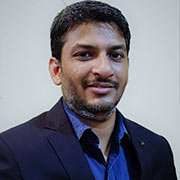All good software companies have one thing in common: great engineers. An engineering team has to be structured properly for a number of reasons, but the primary reason being each engineer bring different skills to the table.
Tech job aren’t just limited to tech now, they require creativity, visualization, and, of course, soft skills. So how does one create a team that works seamlessly, complement each other’s abilities, and ensure success.
The Importance of Structuring Your Team Properly:
As your company grows, the need to shape this growth increases. If not strategized properly, it can cause a loss in productivity. Also, structuring your team while its small is easier. The ownership is better distributed, roles are clear, decisions can be made quickly, and, as you add people, it is easy to modify the current structure.
Moreover, an engineering team, if structured properly, can empower the entire organization and ensure clarity in process for the rest of the teams as well.
Also Read: Tips to Organize Virtual Team Building
Some popular structures used so far are:
- The functional model: Under the functional model, the team is divided based on their roles. This is one of the simplest models commonly used in software, manufacturing, and almost all types of industries. Eventually, people working in a particular team develop expertise in their function and this can benefit your company.
It is easier to standardize processes to make the functions easier, increase productivity, and output. It is also easier for managers to manage their teams and functions but in this model, there is a lack of ownership as it is usually the managers who have the responsibility of the task. - The pod model: The Pod model suits organizations that are trying to grow quickly and adding more products and people. In the functional model, the team is built as per function, but in the pod model, the team is built around the product. For example, Java developers, PHP developers, DevOps engineers, etc.
Pods do function autonomously, although the process of line management could be challenging for the managers. The standardization of processes is difficult but each pod is self-sufficient. The pod model adds flexibility to the business as these pods can be modified or changed as per business needs. If your company adds a product, it needs to only add a new pod, and the performance of each pod can be easily evaluated by assessing the performance of the product in the market.
Also Read: Top 101 Remote Work Resources and Tools for hiring managers & team leaders
Why Hiring is The First Step for a Successful Engineering Team
While structuring your engineering team, hiring with technical screening is the foremost step. As it is the skills of the people in your team that make or break your teams.
The best hiring strategy won't work until you are clear about what skills you are looking for. Some top tech skills as per the LinkedIn study conducted this year are cloud computing, AI, Blockchain, UX designing, Business analytics, analytical reasoning, sales, etc. and soft skills that are in demand are creativity, collaboration, emotional intelligence, adaptability, and persuasion.
To design a team of the best engineers, conduct a great assessment. iMocha helps to conduct a smooth online skill assessment and filter out candidates, exactly with the skills that you want. When it comes to tech skills, technical skills assessment testing platforms are most beneficial as they have ready assessments on almost all kinds of skills that you would be searching in an engineer.
Post assessment, conducting an interview is essential to know how good a team player they are and how their skills can complement each other. You may also consider conducting a group discussion round apart from a personal interview. Engineers, especially working in a software company, need strong communication skills and interpersonal skills which can be evaluated during these rounds.
These soft skills, however, can also be assessed using the same online it skill assessment test tools. That would help in ensuring that the focus is on one thing only during the interview, i.e., tech skills.
Restructuring Models to Maintain Growth:
To maintain the momentum of growth, continuous restructuring is done by most companies by adding people with desired skills. There are a few things that need attention when you decide to restructure.
- Check the flaws in the current structure. Diagnose what is wrong in the current model. It could be a lack of collaboration, difficulty in management, or reduced productivity.
- Keep your customers in mind when addressing these flaws in the model. Companies restructure to enhance their productivity to serve their customers in a better way. Hence, focus on long term solutions for continued productivity.
- Have a strategy and make restructuring a continuous process. A big change in your team structure cannot be brought about suddenly. Strategize this change without affecting the current output and see that your organization smoothly adapts it.
- Decide who’d take the ownership of this process. When you restructure, ensure that there is a clear sense of ownership of work across your organization.
- Ensure flexibility in practices. Make a room for changes and experiments in the current structure to make it sustainable for a longer duration.
No team structure is perfect and needs continuous changes and restructuring to ensure growth. Hiring the right candidate can help this process and bring the right skills onboard to strengthen each team. A team structure can work well only if it's flexible, agile, and open to experiments and innovation.



